The VG10/ Damascus Triad Kitchen Knife is a high-end kitchen knife known for its superior sharpness, durability, and beautiful pattern. It utilizes VG10 steel as its core, with multiple layers of Damascus steel wrapped around it to create a unique “triple steel” structure. This design combines the high hardness of VG10 with the toughness and corrosion resistance of Damascus steel, making it a top choice among kitchen knives .

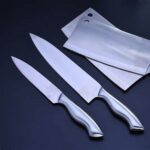
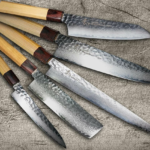
Key Features:
VG10 steel:
Composition: high carbon steel with chromium, molybdenum and cobalt, hardened to 60-62 HRC, sharp and corrosion resistant.
PERFORMANCE: Good blade retention for frequent use.
Damascus steel outer layer:
CONSTRUCTION: Multiple layers of steel are folded and forged to create a beautiful pattern while enhancing toughness and corrosion resistance .
Aesthetics: Unique swirling or wavy pattern combines artistry and practicality.
Triple-merged steel design:
Core: VG10 steel provides hardness and sharpness.
Outer: Damascus steel enhances toughness and rust resistance.
Benefits: Rigid and flexible, suitable for a wide range of kitchen tasks such as chopping vegetables, cutting meat, peeling, etc.
Production process and procedure
The production process of VG10 Damascus triple steel kitchen knives is complex and involves several steps such as material selection, forging, heat treatment and grinding. The following are the main processes:
1. Material Preparation
VG10 steel: as the core material, it needs to be strictly screened to ensure high purity and homogeneity.
Damascus steel: steel with different carbon content (e.g. high carbon steel and low carbon steel) are selected and proportionally stacked to form the pattern.
2. Forging
Stacking and forging: VG10 steel is placed in the center, with multiple layers of damascus steel wrapped around the outer layer, and the layers are tightly bonded through high-temperature heating and repeated forging.
Pattern formation: Through folding and twisting processes, unique pattern patterns are formed.
3. Heat treatment
Quenching: Heating the knife blank to the critical temperature and then cooling it rapidly to improve the hardness.
Tempering: proper heating and cooling to reduce brittleness and increase toughness.
4. Forming and grinding
Rough grinding: Preliminary shaping of the knife blade and body with a belt sander or grinder.
Fine grinding and polishing: fine grinding of the knife edge to ensure sharpness and mirror polishing to make the surface smooth and the pattern clear.
5. Acid washing
The pattern is visible: the blade is treated with weak acid to make the pattern of the damascus steel more visible.
6. Knife handle making
Material selection: Wood, antler or G10 are commonly used to ensure a comfortable grip.
Installation: Combine the handle with the blade to ensure stability and aesthetics.
7. Quality Control and Packaging
Testing: check hardness, sharpness and toughness to ensure product quality.
Packaging: equip the knife with a sheath and anti-rust treatment to ensure safe transportation.
Strengths and weaknesses
Pros:
Good sharpness: VG10 steel has a hardness of 60-62 HRC and good blade retention.
Good toughness: Damascus steel outer layer enhances the knife’s impact resistance.
Aesthetically pleasing: unique pattern design combines artistry and practicality.
DURABLE: Corrosion and rust resistant, suitable for long-term use.
Inadequate:
Higher price: due to the complexity of the process and high production costs, the selling price is more expensive.
High maintenance requirements: regular maintenance is required to avoid rust or damage to the blade.

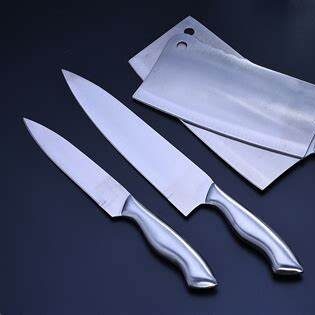
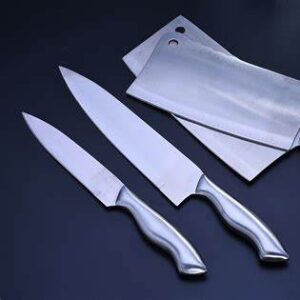
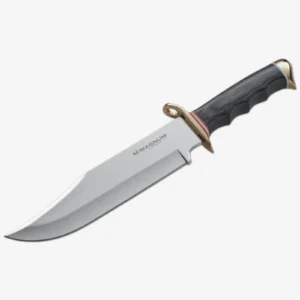
Reviews
There are no reviews yet.